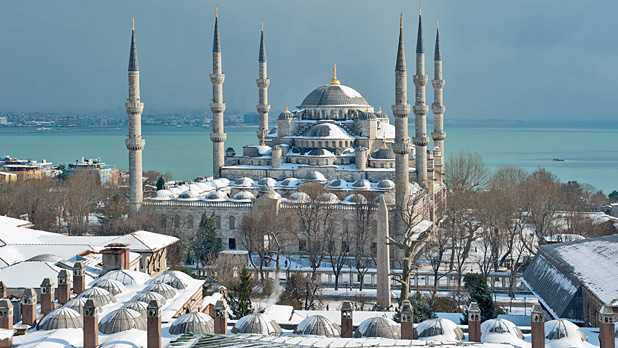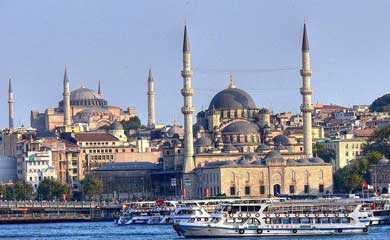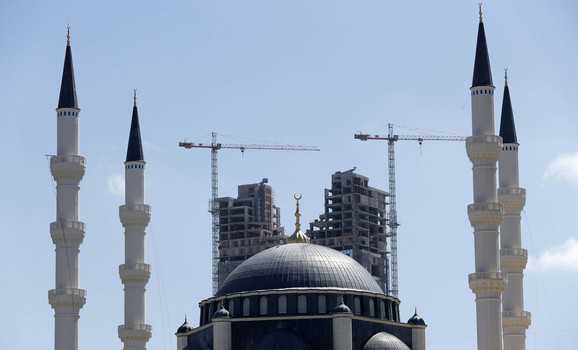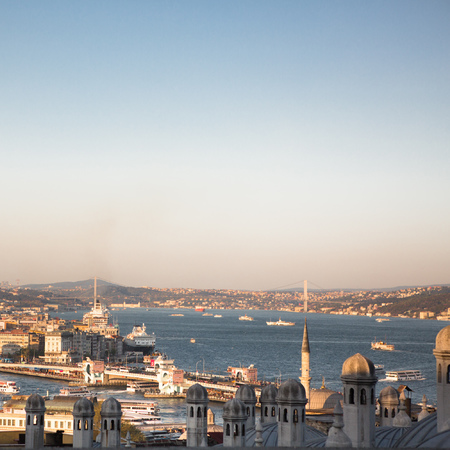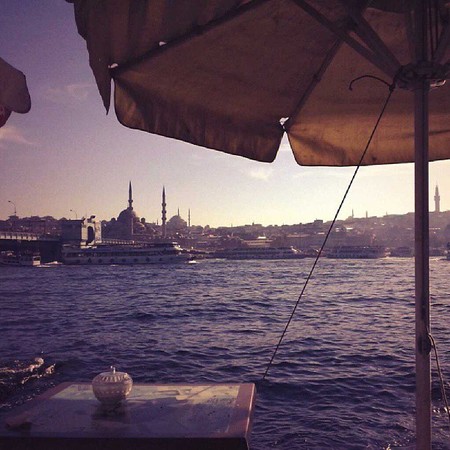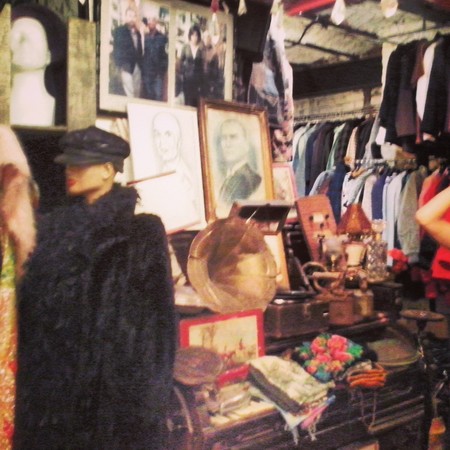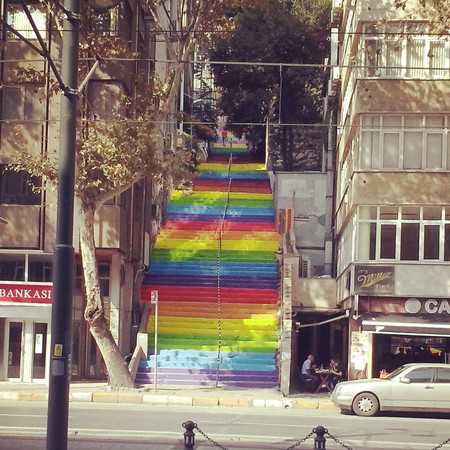Jessica Stillman, Contributor
I write about careers, the future of work & generational differences.
 A veteran of the Bay Area startup scene relocates to Istanbul and reports back on the pluses and minuses of working among the city’s vibrant community of young entrepreneurs.
A veteran of the Bay Area startup scene relocates to Istanbul and reports back on the pluses and minuses of working among the city’s vibrant community of young entrepreneurs.
Why would a young woman with a great gig as a VP Marketing at a mobile e-commerce company in San Francisco pack up and move halfway around the world to work at a startup in Istanbul? And what did she find when she arrived in her new city on the water (this time the Bosporus rather than the Bay)?
Forbes asked Peri Kadaster, now head of strategy and marketing at mobile software company Pozitron, about making the move from the Bay Area to Turkey and got the inside scoop on what the startup scene in her new city is like.
How big is the startup scene in Istanbul?
A lot of people are surprised at the size of its startup scene. Turkey is a country of 75 million people with a very young and increasingly educated population, so it’s ripe for cultivating entrepreneurs. In recent years one of the biggest advances has been in the institutional support for entrepreneurs. Endeavor, for example, is an incredible worldwide organization that is phenomenal in providing mentoring and support to the startup ecosystem. Several of the leading technology companies – including Pozitron (where I work) – have started out with strong ties to the Endeavor program.
In addition several incubators and angel networks have been increasingly active, including eTohum(Turkish Y Combinator), Galata Business Angels(founded by first generation internet entrepreneurs), and numerous university Technoparks (which provide tax incentives for office space). Several of the leading universities in Istanbul have programs aimed at promoting entrepreneurship. I would say over the past decade, there has been a step function acceleration of not only the number of entrepreneurs but also the maturity of the surrounding ecosystem.
Is it focused on any particular niche or sector?
Several of the players I am most excited about are in e-commerce (e.g., flash sales – Trendyol andMarkafoni are the biggest examples) and other forms of commerce (food delivery, such as Yemeksepeti). When eBay acquired GittiGidiyor for 200 million USD, it highlighted to the global market that Turkish startups can drive meaningful value.
The services industry is another area that is seeing a lot of attention. Turkey has a large, relatively low-cost, word-of-mouth based market around services. Now, as people have gotten more comfortable with e-commerce, businessmodels that bring aggregation and transparency to these markets are emerging (for example, Favoreat brings together people who cook with people who want home-cooked food).
What are the top challenges startups there are facing?
One area where Turkey is not as well developed is in institutional investors. Most domestic investment originates from large banks and/or conglomerates, and more recently private equity firms have entered the mix. But venture capital (as well as angel investment) is still a relatively nascent field in Turkey, so a lot of the VC investments that do take place are foreign in origin. That presents its own challenges, like getting on the radar of investment firms around the world, but also presents opportunities for firms abroad who are looking for diamonds in the rough.
Another challenge is that the equity-based ownership and compensation model is in early stages in Turkey. Partially due to legal complexity, while some firms offer profit-sharing, the idea of compensation tied to equity is rare. As a result, there is competition for talent with later-stage firms who can provide more cash compensation, without the issue of equity dilution. A third challenge is copycats. After Groupon GRPN -0.49% debuted in Turkey, within a few months there were 126 “clone” companies, most of which had no business model. The threat of imitation can be a barrier to entrepreneurs looking to test new concepts.
I think the biggest challenge to Turkish entrepreneurship is actually cultural. Turkey is in the shadow of larger, more western markets like the United States. One of the things that surprised me the most is that Turkish entrepreneurs often don’t give themselves enough credit. Put another way: there is a deep-seated fear of failure. Whereas in Silicon Valley it’s in some way a badge of honor to talk about past business failures, in Turkey there is still a stigma attached to shuttering a business.
What are the biggest advantages of starting up in Istanbul?
Turkey is located at the intersection of Europe and Asia, making it logistically a fantastic gateway for interaction with other markets. Istanbul’s 3-4 hour flight perimeter covers Dubai, Doha, Moscow, London, Berlin, Cairo, and Paris, making it an ideal location for client service and multinational operations. The population is well-educated, with over 50 universities and a vibrant expat culture.
Turkey has leapfrogged many other western countries in the speed of internet and smartphone penetration. Turkey is consistently cited as one of the most engaged markets by social media outlets, so we are lucky to have a population that is not only comfortable but highly engaged with new technologies. This makes it a phenomenal playground for rolling out new businesses. Lastly, there is a phenomenally supportive ecosystem that has emerged around entrepreneurship in Istanbul. There has been a “reverse brain drain” since the 2008 US financial crisis, where highly educated Turks are often returning to start entrepreneurial ventures.
You came from the Bay Area, so what are the biggest contrasts with the scene there you’ve noticed?
There are many similarities between Istanbul and the Bay Area – every week there are countless happy hours, conferences, and other events. There is an energy that is palpable. The biggest contrast is that Istanbul lacks some of the physical hubs so prevalent in the Bay Area, whether it’s the ballpark area in SoMa or University Avenue in Palo Alto, the Bay has neighborhoods that make it very easy for companies to interact and exchange ideas. Coworking spaces and hubs are relatively nascent in Istanbul.
Do you run into any misconceptions about the ecosystem in Turkey and, if so, what are they?
Unfortunately misconceptions about Turkey are a daily fact of life. One of the biggest misconceptions is a cultural lack of awareness of what Turks are like. When partners from the United States visit Pozitron’s Istanbul office for the first time, they are usually blown away at how “western” it is. Scores of 20-something developers in flannel shirts and jeans, gadgets like 3D printers andGoogle GOOG +1.38% Glass strewn for experimentation and breaks, free food and drinks, stand-up desks and yoga ball chairs. Looking at the people and at the environment you could easily mistake us for countless other companies in the States. But many people do not know what to expect, so that is an issue.
The Turkish government also has done a disservice to the startup ecosystem. As a result of the authoritarian crackdown on peaceful protesters in Istanbul earlier this year, many foreigners perceive either the ecosystem or the country as troubled.
Is there anything else you’d like American readers to know about startups in Istanbul?
Every single day I get asked why I moved from San Francisco to Istanbul. I encourage anyone excited about entrepreneurship to visit both San Francisco and Istanbul. What I’ve seen in Istanbul has blown me away in terms of the level of talent around innovation and product development. There is zero doubt in my mind that Istanbul will continue to emerge as one of the global capitals of entrepreneurship in the years to come.
Photo credit: Wajahat Mahmood via Flickr.
https://www.forbes.com/sites/jessicastillman/2013/11/25/from-the-bay-area-to-the-bosporus-getting-to-know-the-istanbul-startup-scene/

